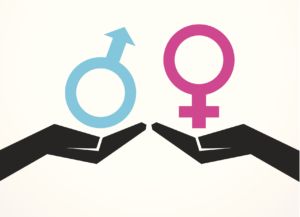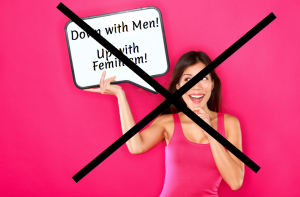
Three teenage girls – Cher, Tai, and Dionne – posing together for a photo and smiling.
There is a marked difference between how teen movies portray teenage girls and how adult movies view them.
From comedies like The To Do List starring everyone’s favorite surly youth Aubrey Plaza, to Hilary Duff’s Disney-appropriate fun in The Lizzie McGuire Movie, teenage girls are shown struggling with the same issues as their male counterparts: They’re young, they’re struggling with the move to adulthood, and they get up to their fair share of awkward and embarrassing antics.
These characters are realistic because they’re written for teenagers and are out to connect with teenage girls: Instead of existing just to fulfill some kind of Lolita fantasy. These are teenage girls who have storylines instead of spaghetti straps and barely-there skirts. They’re teenage girls who have gangly limbs and too much lip-gloss, who don’t flirt with their friends’ dads, and who are totally justified in their adoration of Sylvia Plath.
Teenage boys, however, are more often afforded stories that explore their loss of innocence at this age – their never-ending quest to become a “man,” from the invention of teenagehood with Catcher in the Rye, to a more recent in-depth analysis of the human condition in Boyhood. The transition from child to adult in men is almost always treated with reverence in the media.–
Even outside of more serious lexis, films like American Pie hold their female characters to a lower regard than the men – their comedic value is often underestimated or left for a sequel, if the original male version is popular. See: Neighbors and the follow up, Neighbors 2, for example. Ultimately, the role of the teenage girl in these comedies is to be the “goal,” the trophy that the nerdy teens unlock at the end for buying beer or saving the party.
The thing is, though, this isn’t just about movie representation: The discomfort of being dismissed for being a woman is one that lasts throughout a person’s life.
The weakness that’s associated with all things feminine is one that makes women want to avoid expressing enthusiasm in their interests: Being called a “fan girl” is the ultimate in disdain.
These notions of seeing women, girls, and their interests as vapid, ignorant, or pointless are embedded into our subconscious at so many different moments in our lives – it’s only reinforced by media portrayals.
But we feel it most keenly aged fourteen, being told our taste in music is bad, our want for attention is embarrassing, and our taste in clothes is either too adult or too childlike. Often as teenagers, we feel there’s no possible way we can win. And looking back, I feel that, for teenage girls, there really isn’t.
There are four definable types of teenage girl presented in the media, tropes that bring with them demeaning stereotypes that not only affect and reflect society’s views on women, but the self-worth of individual teenagers, too.
Of course, there is much more to unpack in regards to how the media represents various marginalized groups. For example, in its representation of teenage girls, the mainstream media most often represents only thin, white, middle-class, able-bodied, straight, cisgender teenage girls. As such, even the unpacking of the tropes herein doesn’t do enough to get at the heart of the issue – that the media straight-up ignores most people – but it’s at least a glimpse into how even this narrow representation is wrong.
It’s important not only to take note when tropes like these arise, but to recognize the damaging potential they truly have – so that we can fight back against them.
1. The ‘Jailbait’ Teenage Girl
In American Beauty, when character Angela Hayes (played by Mina Suvari) tells Jane Burnham (played by Thora Birch) that she wants to fuck her dad in American Beauty, there’s a sense of dark humor in it – one that comes from a place that anyone who has ever been a teenage girl knows all too well: receiving attention for your looks and wanting more.
In films like these, this want is seen as a kind of sexual power that girls on the very verge of becoming legally sexually viable hold. But in reality, it’s a sense of loneliness and desperation that’s been fueled for our entire lives.
We’re taught that women exist to gain male attention – and that by receiving it, a woman is of worth. This is a patriarchal ploy to get women, especially young women, to feel lucky and proud of the attention of men. By pretending the power is in the hands of the teen girl, the young woman – the jailbait and the tease – the true toxic nature of the exchange between young woman and adult man is masked.
While we smirk at the audacity of Natalie Portman’s Mathilda in Leon claiming that her and her hitman caretaker are “lovers,” and while we laugh (and then cry) at Mena Suvari’s seduction of Kevin Spacey in American Beauty, these moments only serve to prove my point.
Youth is seen as a commodity. And youth can, supposedly, be weaponized by those who possess it. But it’s our very society that gives teenage sexuality such power.
And is it even power in the first place to play into sexual standards set by a gaze that have nothing to do with women?
2. The ‘Vapid’ Teenage Girl
She’s the older sister that refuses to buy you beer, the girl your friends have a major crush on. She constantly chews gum while painting her nails and refuses to let you in her room anymore. She cares about looking good, dating cool guys, and not being associated with your uncool ass. Of course her interests are totally vapid and pointless, because she’s just at “that age.”
The “vapid” teenage girl is best exemplified through Ferris Bueller’s older sister Jeanie in the iconic coming of age film, Ferris Bueller’s Day Off. She’s uninterested in adventure, but solely invested in herself and what she wants. This is, inevitably, shown to be a bad thing.
Both on screen and in the real world, girls and women are told repeatedly to care for their looks, their popularity, and their attractiveness to men. When, however, a woman engages with achieving these things – at least on a public, visible level – she’s seen as vapid and vain.
For teenage girls in reality, the choice becomes a double-edged sword: She can show disdain to the things that are popular to her peers and distance herself from them, or she can join in and suffer at the judgment of the rest of the world.
Hollywood needs to do better by teenage girls and their interests. These secondary female characters are shoehorned into roles that simultaneously strip women of their worth and mock them for the things they find valuable.
As Josh discovered about Cher in Clueless, a woman’s intentions and interests are much deeper than they may appear. It’s the value (or lack thereof) that men put on these issues that make them, and in turn the girls who care about them, seem shallow.
The problem here isn’t that the interests of younger women are vapid – it’s that they’re seen as such.
The artistry of makeup is lost under being seen as catering to the male gaze. Caring about fashion is seen as shallow because, as a female-dominated medium, its worth isn’t recognized in the patriarchy.
Ambition to succeed in these fields, as well as a want to be popular that anyone can understand, is dismissed by a society that doesn’t see these vocations as valuable. From this, the teen girls in society who engage in them are dismissed, too.
3. The ‘Mature’ Teenage Girl
The Diary of a Teenage Girl, based on the graphic novel of the same name by Phoebe Gloeckner, could have been the ultimate teen movie.
The film is beautifully acted, wonderfully illustrated, and finds equal parts humor and disgust in the hormonal fueled thoughts and rages of teenagers in ‘70s America (and in the time since). All in all, it was a teen movie that many women could empathize with – except for the sexual relationship between the fifteen-year-old protagonist and the boyfriend of her mother.
This is far from the first film to portray a sexual and romantic relationship between a teen who can’t even drink legally yet and a middle aged man as acceptable. If anything, this is often a common trope used to undermine the importance of consent in teenage girls’ sexual encounters.
By doing this, films like An Education and Almost Famous create a culture that sees older men desiring younger women – and conversely, younger women desiring older men – as normal. Women desiring a secure relationship with a wiser, older man is a direct outcome of men desiring youth: Because if women want the same deal, what’s the problem?
But what men get out of desiring youth, outside of an aesthetic basis, is a superiority complex of adult versus teenager – a superiority complex that has no place in any healthy relationship.
By making relationships like these seem like a right of passage for young women, by normalizing them to such an extent that it can even be called a trope, a disturbing turnaround happens, in which women are seen as the victors of a predatory situation, rather than the victims.
While the men at the end of these films are seen as lowly and pathetic, the girls are shown to simply have matured from the experience. It robs the situation of the trauma that, in reality, young women often suffer at the hands of much older men.
While the tantalizing nature of such an age gap makes for a good plotline, it misleads generation after generation of girls into believing that they truly want and need an “older man” to further their maturity.
In the end, the men involved get the innocence they crave before women are “corrupted” with age – as ultimate creepster Woody Allen describes it in Manhattan – while the women are left with nothing but pain and misconceptions about romance.
4. The ‘Cool’ Teenage Girl
The teenage girl that doesn’t act like a “typical” teenage girl is celebrated, receiving accolades for eschewing the interests and enthusiasms of her peers.
But her very title as a “cool” girl comes entirely from not acting how we expect teenage girls to act – and that forced dichotomy says a lot about how we view young women.
In real life, if this personality comes naturally, it makes sense – obviously not all teenage girls act the same or have the same interests. But in terms of the media trope, it’s important to point out that these actions can’t come naturally – because they’re scripted. They’re planned. They are intentional moments created by a team of writers, producers, and directors to make this specific teenage girl stand out in a sea of vapid, boring high schoolers.
Milla Jovovich’s character in Dazed And Confused nods along with typical stoner talk, passes a joint, and plays the guitar with an effortless sense of cool. Every female protagonist in any John Green novel stands out for choosing not to go with the flow. The Manic Pixie Dream Girl, who exists solely so that the male lead can truly find himself, meanwhile achieves nothing of her own. She’s a two-dimensional character that only serves to stand out in a crowd – but in doing so, damages the already pitiful perception of femininity in the media and in society.
***
It would be unfair, however, to assume that all of cinema is so staunchly patriarchal in these respects. Many films do their utmost to oust the male gaze and reclaim the teenage girl character. Most poignantly, although less critically acclaimed, comes Jennifer’s Body – the box office flunk that became a cult hit with teenage girls everywhere (or at least the ones I know). The film sees regulation hottie Megan Fox turn into a soulless demon that kills people – or, more specifically, boys.
Jennifer and her body grow in attraction and strength after each murder, her beauty and sexuality palpable and purposefully centered after her male meals. For her next catch, she uses said sexuality to lure in men, only to kill them and complete the cycle. It’s over the top and it’s campy, but it’s cathartic.
Instead of teenage girls using their bodies to win favors – as it’s the only currency they have in this society – Jennifer’s Body sees a teenage girl use her body to remove one more toxic fetishization of the youthful female form.
And this is the type of film we need to see more of: ones that not only champion the teenage girl, but that mock a society that doesn’t see her worth.
[do_widget id=’text-101′]
Gina Tonic’s dream as a child was to become a ballerina Barbie fairy princess. She’d say she’s about halfway there. She currently lives in Manchester, UK but she’s from a teeny tiny town in the south of Wales. Her passions include personal style, feminism, writing awful short stories, and anything glittery.
Search our 3000+ articles!
Read our articles about:
Our online racial justice training
Used by hundreds of universities, non-profits, and businesses.
Click to learn more
Most Read Articles
- « Previous
- 1
- …
- 30
- 31
- 32









